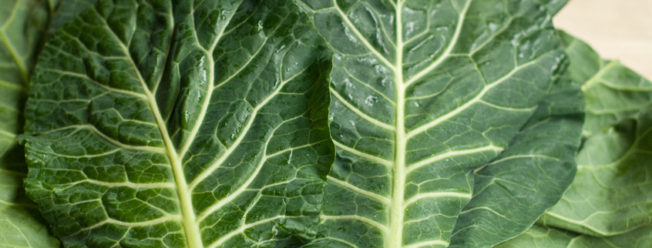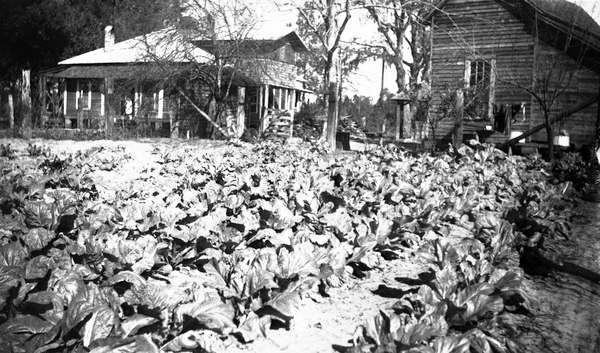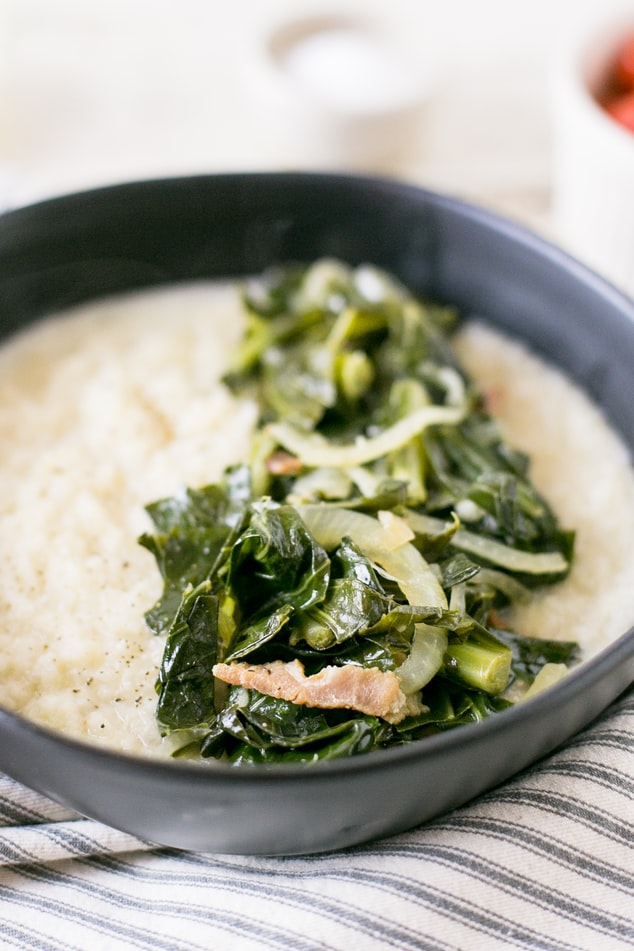Collards
Brassica oleracea
Origin: Africa
Quick Facts
- ornamental flower with edible greens
- flowers come in a variety of colors
- grows well in hot Florida summer
- Swahili name is ‘mfungu’
- another fact
- another fact
- another fact

HEADING about something general
A SUBHEADING about something specific
General overview:This section should provide a brief overview that touches on information presented in the page. Consider dedicating one sentence each to history, growing requirements, nutritional composition, cooking instructions, etc. The last line of this introductory paragraph should be in alignment with the last line of the ‘Quick Facts’ section. So be sure to list your quick facts in order of importance with the most important at the top. Since this is an overview of information presented, it should be written last.
The image above should be an aesthetically engaging photo – be sure to cite where it was sourced and ensure it is not copyright protected.
In Africa
This section should provide a brief overview of the history and significance of the plant in Africa. Be as specific as possible in describing where it originated and where it is still used used (country, region, etc.)
Describe the cultural aspect of the plant in this section. Consider presenting some of the common names in different African languages as well s the names if African dishes it is used in.
In America

The Southern style of cooking of greens came with the arrival of African slaves to the southern colonies and the need to satisfy their hunger and provide food for their families. Though greens did not originate in Africa, the habit of eating greens that have been cooked down into a low gravy and drinking the juices from the greens is of African origin.
Nutrition Facts
Collard greens are an excellent source of vitamin A, vitamin C, and calcium, a rich source of vitamin K, and a good source of iron, vitamin B-6, and magnesium. They also contain thiamin, niacin, pantothenic acid, and choline
Source of nutritional information
In Your Garden
Collards prefer rich, well-drained soil in full sun. In spring, sow seed directly in the garden 1/4 to 1/2-inch-deep after danger of heavy frost. Space the rows 30 inches apart. Thin seedlings to 6 to 8 inches apart. You can also star the seeds indoors 4 to 6 weeks before transplanting. The plants need 1 to 1-1/2 inches of water every week.
References for this section can be:
Recipes for Your Table
This section should provide a description of the plant as a culinary ingredient. This can include taste, flavor, common preparation techniques, names of several dishes, and other ingredients it is commonly associated with, etc.
Dadisi Olutosin’s Recipe
- 2 large bunches of collard greens
- 2 large red onions
- 1-ounce raw ginger
- 4 tablespoons extra virgin olive oil
- 8 ounces baby portobello mushrooms
- 4 cloves garlic
- 1 tablespoon raw sugar 2 tablespoons sea salt (or to taste)
- 4 tablespoons medium yellow or red curry powder
- 1 tablespoon freshly ground black pepper
- 8 ounces (1 cup) coconut milk
- 4 ounces chopped roasted peanuts (optional for garnish)
- 2 Roma tomatoes (optional for garnish)
(Optional meat to add precooked pork belly, bacon, ham hocks or smoked turkey necks, chopped or left whole)
Roughly chop both onions, mushrooms, garlic, and ginger. Add olive oil to a 3-to-4-quart pot on medium heat. Let the oil heat up a little bit. (If it starts smoking it’s too hot.) Then add chopped items — sauté until they start to sweat and caramelize. Stir gently with a large wooden spoon while adding salt (to taste), black pepper and curry powder.
Wash and thoroughly clean the collard greens to remove any grit. Cut off the stems but don’t throw them away. Stack the leaves in piles of three-to-four, then roll them tightly. Take your knife and chiffonade the rolls —cut them into strips.
Slowly add the strips of collard greens to the pot, then fold the seasoned vegetables on top. If you’re using meat, add it now. Cook over medium heat.
The moisture in the greens will evaporate from the heat of the water, decreasing their volume.
Once you see steam coming from the pot, your greens are ready for the final step. Gently stir in the coconut milk, then cover the pot and allow to simmer for 30-45 minutes, depending on how tender or tough you want your greens to be.
Serve greens with optional garnishes like sliced or diced raw onions and tomatoes and crushed peanuts. Don’t forget, some good cast-iron skillet buttermilk cornbread goes great with greens.

References & Resources
Jalyn Jackson contributed content to this page as part of HUM2420: African Humanities at Santa Fe College. This page was edited by Dr. Sarah Cervone in the Department of Humanities and Foreign Languages at Santa Fe College.
This page was created as part of a Florida Folk Life project in collaboration with Santa Fe College, the Matheson Historical Museum and ……
For more information visit www.thefloridafolklifeproject.org
